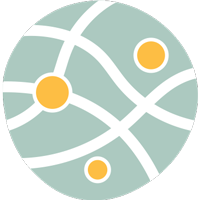
Extracellular Matrix News
Extracellular Matrix News is an online resource that keeps scientists updated on the latest extracellular matrix research.
U of T, Hospitals Launch Pilot Program to Boost Commercialization of Medical Innovations
[University of Toronto] The University of Toronto (U of T) is collaborating with the University Health Network, the Hospital for Sick Children, and Sunnybrook Research Institute on a new program that aims to leverage the expertise of entrepreneurs and business leaders to advance commercialization of emerging medical technologies and regenerative medicine research.
Characterization of TGFβ1-Induced Tendon-Like Structure in the Scaffold-Free Three-Dimensional Tendon Cell Culture System
[Scientific Reports] Researchers developed a scaffold-free, 3D tendon culture system using mouse tendon cells in a differentially adherent growth channel.
Dr. David Greene Unveils Groundbreaking Scholarship: Pioneering Medical Minds
[Business Insider] Healthcare innovator Dr. David Greene announced the establishment of the esteemed Dr. David Greene Scholarship for Medical Students, aimed at fostering excellence and innovation in the medical community. This scholarship, valued at $1,000, presents a unique chance for undergraduate students to further their medical ambitions.
Increased Uterine Arterial Tone, Stiffness and Remodeling with Augmented Matrix Metalloproteinase-1 and -7 in Uteroplacental Ischemia-Induced Hypertensive Pregnancy
[Biochemical Pharmacology] Scientists tested whether hypertensive pregnancy involved localized aberrations in uterine arterial tone, stiffness and remodeling by matrix metalloproteinases.
A Single Chain Variable Fragment Antibody (TN 64) Cognate to Fibronectin Type III Repeats Promotes Corneal Wound Healing by Inhibiting Fibrosis
[International Immunopharmacology] The authors showed that Tn64 bound to Tn fn repeats 3–5. Unlike other Tn fn domains, Tn fn 3–5 displayed no inhibition of fibronectin matrix assembly.
Resistance Training-Induced Changes in Muscle Proteolysis and Extracellular Matrix Remodeling Biomarkers in the Untrained and Trained States
[European Journal Of Applied Physiology] Scientists examined how proteolysis-related biomarkers and ECM remodeling factors respond to a bout of resistance training in the untrained and trained state.
Sophoridine Exerts Anti-Arthritic Effects on Fibroblast-Like Synoviocytes and Collagen-Induced Arthritis in Rats
[Phytotherapy Research] A collagen-induced arthritis rat model and tumor necrosis factor alpha-induced fibroblast-like synoviocytes were utilized to investigate the inhibitory effect of Sophoridine on hreumatoid arthritis.
Engineering Approaches for Understanding Mechanical Memory in Cancer Metastasis
[APL Bioengineering] Investigators explore the evolving mechanical landscape during metastasis, emphasizing the significance of mechanical memory and its influence on cell behavior.
Engineering Large-Scale Self-Mineralizing Bone Organoids with Bone Matrix-Inspired Hydroxyapatite Hybrid Bioinks
[Advanced Materials] Bioprinted scaffolds facilitate the long-term cultivation and progressive maturation of extensive bioprinted bone organoids, foster multicellular differentiation, and offer valuable insights into the initial stages of bone formation.
Injectable In Situ Gelling Methylcellulose-Based Hydrogels for Bone Tissue Regeneration
[Journal Of Materials Chemistry B] In vitro biological characterization revealed the beneficial impact of CaP and CaPGO, indicating their potential in promoting cell adhesion, proliferation and osteogenic differentiation.
Reducing Nogo-B Improves Hepatic Fibrosis by Inhibiting BACe1-Mediated Autophagy
[Tissue Engineering And Regenerative Medicine] Knocking down Nogo-B caused the downregulation of pro-fibrotic genes and inhibited the viability of hepatic stellate cells. Nogo-B knockdown prevented CCL4-induced fibrosis, accompanied by downregulation of the extracellular matrix.
A Highly Biocompatible CE-Crosslinked Collagen Implant with Exceptional Anti-calcification and Collagen Regeneration Capabilities for Aging Skin Rejuvenation
[Journal Of Materials Chemistry B] A novel collagen crosslinking agent (CE) was synthesized through a reaction involving chitosan quaternary ammonium salt with 1,4-butanediol diglycidyl ether. Compared to collagen crosslinked with glutaraldehyde, the CE-crosslinked collagen implant exhibited notable stability and durability.
The Extracellular Matrix News team is proud to provide an essential resource on the latest publications, reviews, industry news, and jobs relevant to the matrix research community. Topics include extracellular matrix-cell interactions, extracellular matrix protein characterization and their application in tissue engineering and regenerative medicine, and the development and characterization of synthetic scaffolds.

 Cancer Stem Cell News
Cancer Stem Cell News Cell Therapy News
Cell Therapy News Dermal Cell News
Dermal Cell News Endothelial Cell News
Endothelial Cell News ESC & iPSC News
ESC & iPSC News Extracellular Matrix News
Extracellular Matrix News Hematopoiesis News
Hematopoiesis News Hepatic Cell News
Hepatic Cell News Human Immunology News
Human Immunology News Immune Regulation News
Immune Regulation News
 Intestinal Cell News
Intestinal Cell News Mammary Cell News
Mammary Cell News Mesenchymal Cell News
Mesenchymal Cell News Muscle Cell News
Muscle Cell News Neural Cell News
Neural Cell News Organoid News
Organoid News Pancreatic Cell News
Pancreatic Cell News Prostate Cell News
Prostate Cell News Pulmonary Cell News
Pulmonary Cell News
